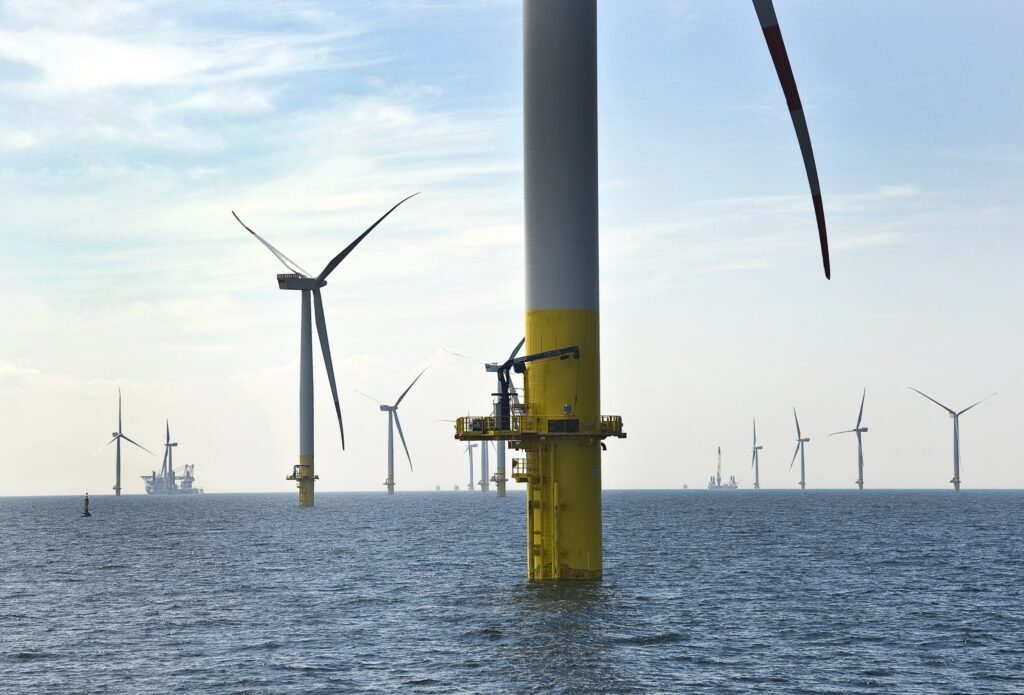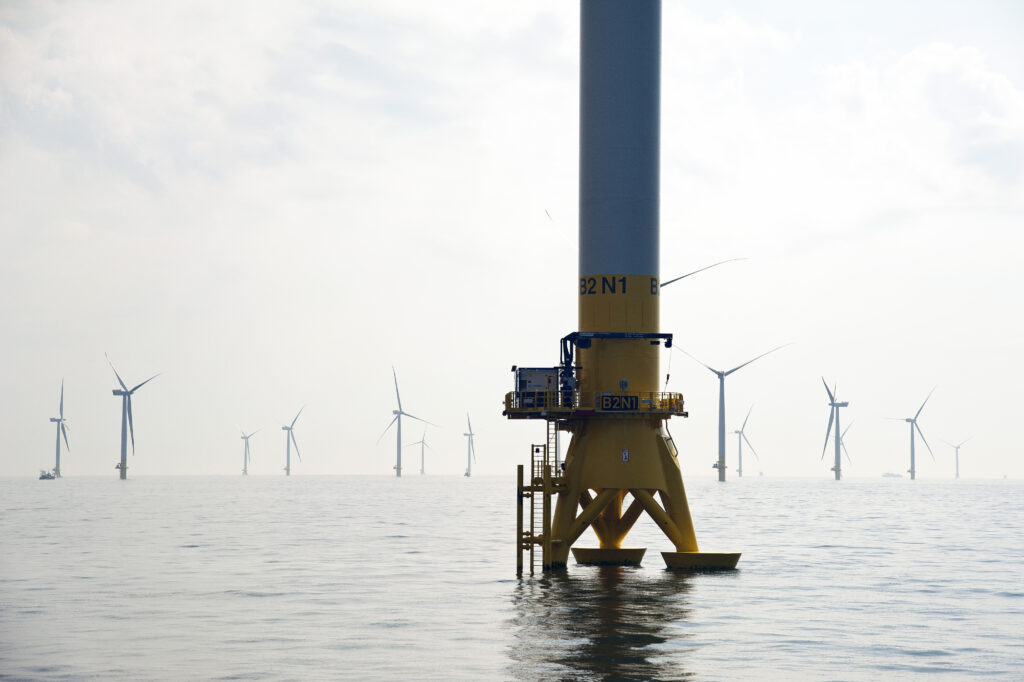As Germany continues to invest heavily in offshore wind farms and platforms in its Exclusive Economic Zone (EEZ) in the North Sea and the Baltic, ocean observing is playing a vital role in optimising operation and productivity now and for the future.

Ocean observing also helps the German government gather valuable knowledge on physical ocean variables as well as marine species in the area such as harbour porpoises and migrating birds as well as wind farms’ impact on the environment.
The Bundesamt für Seeschifffahrt und Hydrographie (BSH) collects oceanographic and meteorological data from three Forschungsplattformen in Nord- und Ostsee (FINO) observing platforms funded by the Federal Ministry for Economic Affairs and Climate Action of Germany. The German Oceanographic Data Center (DOD) gathers the oceanographic data and the Deutscher Wetterdienst, the German Met Office, hosts databases for marine meteorological data storage from these sites.
On behalf of the German Ocean Observing System, data is collected continuously in near real time (NRT) and integrated into MARNET, BSH’s fixed station observation network. MARNET is made up of the FINO platforms and a number of fixed buoys.
The FINO platforms collect oceanographic parameters including wave height and direction, water level, currents, temperature, salinity, oxygen, pH, turbidity, fluorescence and chlorophyll. Additionally, they observe meteorological parameters of wind speed and direction, turbulence, air pressure and temperature, UV radiation, moisture, precipitation and rainfall. These meteorological data are provided in close cooperation with the Deutscher Wetterdienst.
As Germany increases the amount of energy it generates from wind power to meet its commitment to the Paris Agreement and mitigate the impact of the Russia-Ukraine war on European energy supplies, FINO platforms are playing a pivotal role in the transformation towards renewable energy supply.

Germany powers ahead with offshore energy
At the end of 2023, 29 German offshore wind energy projects totalling 1566 turbines were fully operational. Together, these have an installed capacity of 8.5 GW of clean energy. The German Offshore Wind Energy Act demands that capacity be increased to at least 30 GW by 2030, 40 GW by 2035, and 70 GW by 2045.
Ocean observing is integral to Germany’s ambitious wind energy plans.
Ocean observing and offshore wind energy
Wind farms produce what is known as a wind energy crop – the amount of energy they generate. Ocean observing helps calculate and estimate the amount of this crop based on wind speed and direction.
Ocean observing also helps engineers calculate loads and turbine fatigue, estimate the longevity of an offshore wind farm, and shape the design of the next generation of wind turbines. NRT data supports the assessment of turbine wake effects. Oceanographic and meteorological data contributes to more reliable forecast modelling, trend analyses, and scientific assessments such as changes in ocean heat budget.

When it comes to measuring the impact of wind farms on species and the environment, sensors installed on the FINO 1 platform in the North Sea monitor bird migration in its vicinity and that of the surrounding offshore wind farms to model potential bird collision risks. Grab samples collected from FINO 1 have monitored the impact on hard-substrate benthic organisms around its base on the sandy sea floor. These data are important for assessing possible changes in the sea floor ecosystems.
Photo by Claudia Thomsen
The German offshore wind energy industry perspective
Kai Trümpler leads the planning of German offshore wind farms. Data supplied by ocean observing at FINO stations is vital in helping him make key planning decisions.
‘Germany’s ambitious goals mean that we need the best possible idea of what the yield from our wind farms will be,’ Trümpler says. ‘Historical data on wind in particular is extremely valuable to us and the FINO platforms have really been our gold standard.’
It’s not just individual turbines. Given that Germany plans on building so many more turbines to meet its Paris Agreement commitments and long-term energy goals, it’s necessary to model the impact each individual one will have on those around it.
‘With more and more densely spaced turbines planned, insight into wake effects requires dependable long term data.’ Trümpler explains. ‘Each turbine takes a certain amount of wind energy. There are small-scale wake effects from one to the next and large-scale wake effects from one wind park to another. To be able to calculate how energy from the upper air replaces the energy that’s been taken out by wind farms, it is crucial to know how the wind is distributed over certain heights. Data from the FINO platforms tells us what we need to know.’
There is also the sheer number of wind farms being built, particularly in the North Sea, and the impact they will have on each other. In some cases, energy generated by wind farms is depleted by almost half because they’re surrounded by other wind farms.
Germany alone intends to cover 25% of its Exclusive Economic Zone (EEZ) – the area of the coastal sea up to the 200 nautical mile limit – with wind farms – or roughly 15% of the total North Sea area with wind farms. The Netherlands, Denmark and the UK also have major plans to deploy wind farms. Trümpler points out that North Sea countries and Ireland agreed in the 2023 ‘Ostende Declaration’ to install 120 GW of offshore wind capacity by 2030 and 300 GW by 2050.
‘Being able to model wind distribution is crucial for siting future wind farms, especially in the North Sea,’ Trümpler adds. ‘I hope that, in future, ocean observing will be able to monitor and model the North Sea-wide effects of wind farms and share data from all the EEZs of countries in this particular area.’
Author: Manfred Zeiler
Manfred Zeiler is GOOS National Focal Point for Germany and former Head of Subdivision, Assessment and Monitoring for Offshore Wind Energy Planning and Regulation (Licensing). He has been working in offshore planning and wind energy for almost 25 years
Useful links:
FINO platforms
FINO database information
RAVE database information
Development of Offshore Wind Energy in Germany
Preliminary Site Investigations for Offshore Wind Energy Tenders
